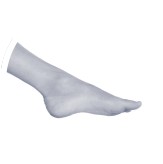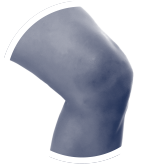
Introduction
Marathon running is more than just a physical feat; it’s a mental and emotional journey that pushes the limits of human endurance. Whether you’re a seasoned marathoner or a novice lacing up your shoes for the first time, understanding the importance of training is crucial for success. In this comprehensive guide, we’ll delve into the significance of training, the effects of endurance running on the body, essential components of a training schedule, and strategies to prevent injuries along the way.
The Importance of Training:
Training is the backbone of marathon success. It’s not just about logging miles; it’s about systematically preparing your body and mind for the gruelling 26.2-mile journey ahead. Without proper training, even the most gifted athletes can falter on race day.
Here’s why training is paramount:
- Building Endurance: Marathon running is an endurance sport, requiring sustained effort over a prolonged period. Training gradually increases your aerobic capacity, allowing your body to efficiently utilise oxygen and sustain effort over the entire distance.
- Mental Toughness: Long-distance running is as much a mental challenge as a physical one. Training builds mental toughness, teaching you to push through fatigue, self-doubt, and discomfort when the going gets tough on race day.
- Injury Prevention: A well-structured training plan not only prepares your body for the demands of a marathon but also reduces the risk of injuries. By gradually increasing mileage, incorporating strength training, and listening to your body, you can mitigate the likelihood of overuse injuries.
Endurance Running and Its Effects on the Body:
Endurance running exerts a profound impact on the body, eliciting both positive adaptations and potential risks. Understanding these effects can help you tailor your training and optimise performance. Here are some key physiological changes that occur during endurance running:
- Cardiovascular Adaptations: Endurance training improves heart function, increasing stroke volume and cardiac output. This allows your heart to pump more blood with each beat, delivering oxygen-rich blood to working muscles more efficiently.
- Muscular Adaptations: Endurance running strengthens muscles, particularly those in the legs and core. Over time, muscles become more resistant to fatigue and better equipped to handle the repetitive stress of long-distance running.
- Metabolic Changes: Endurance training enhances the body’s ability to utilise fat as a fuel source, sparing glycogen stores and delaying the onset of fatigue. It also improves mitochondrial density and efficiency, boosting energy production within cells.
- Skeletal Stress: While running builds bone density and can have a positive effect on bone health, the repetitive impact of long-distance running can also increase the risk of stress fractures and other overuse injuries, especially if training volume or intensity is excessive.
Components of a Training Schedule:
A well-rounded training schedule encompasses various elements to ensure comprehensive preparation for race day. Here’s what should be included in your training plan:
- Base Building: Start with a foundation of easy-paced mileage to establish aerobic fitness and prepare your body for more intense workouts.
- Long Runs: Incorporate weekly long runs to build endurance and mental resilience. Gradually increase the distance of these runs, peaking a few weeks before the marathon.
- Speed Work: Integrate interval training, tempo runs, and hill repeats to improve aerobic capacity, lactate threshold, and running economy.
- Strength Training: Include regular strength training sessions to enhance muscular strength, stability, and injury prevention. Focus on exercises that target key muscle groups, including the core, glutes, lower leg muscles and hip stabilisers.
- Rest and Recovery: Allow adequate time for rest and recovery between workouts to prevent overtraining and promote adaptation. Incorporate easy days, cross-training, and active recovery techniques such as foam rolling and stretching.
- Cross-Training: Incorporate low-impact cross-training activities like cycling, swimming, or yoga to maintain cardiovascular fitness while giving your running muscles a break.
- Tapering: Gradually reduce training volume and intensity in the weeks leading up to the marathon to ensure peak performance on race day while minimising the risk of fatigue or injury.
What can be done to avoid Injuries?
Injuries are a common concern for marathon runners, but with proper precautions, many can be avoided.
Here are some strategies to prevent injuries during training:
- Listen to Your Body: Pay attention to warning signs such as fatigue, pain, or discomfort, and adjust your training accordingly. Pushing through pain can lead to overuse injuries and long-term setbacks.
- Gradual Progression: Increase mileage, intensity, and duration of workouts gradually to allow your body to adapt and minimise the risk of overuse injuries.
- Build Muscle Strength: Strength training improves running form, reduces the risk of injury, and enhances overall performance.
- Cross-Train: Incorporate low-impact activities such as swimming, cycling, or yoga to maintain cardiovascular fitness and strength while reducing the repetitive stress on your body.
- Proper Nutrition and Hydration: Fuel your body with a balanced diet rich in carbohydrates, protein, and healthy fats to support training and recovery. Stay hydrated before, during, and after workouts to optimise performance and prevent dehydration.
- Rest and Recovery: Prioritise quality sleep, active recovery, and rest days; adequate rest allows the body to repair damaged tissues and adapt to training stress, reducing the likelihood of injury.
- Proper Footwear: Invest in high-quality running shoes that provide adequate support, cushioning, and stability. Replace your shoes every 300-500 miles to ensure optimal performance and injury prevention.
- Stretching and Mobility: Prioritise flexibility and mobility exercises to improve range of motion and prevent muscle imbalances. Incorporate dynamic stretches before runs and static stretches after to improve flexibility and reduce the risk of injury.
Marathon running is a journey that requires dedication, perseverance, and a deep respect for the demands it places on the body. By prioritising proper training, understanding the effects of endurance running, and implementing injury prevention strategies, you can embark on this challenging yet immensely rewarding endeavour with confidence. Remember, the road to the finish line may be long and arduous, but with patience, determination, and a well-executed training plan, you’ll cross it triumphantly, one step at a time.
What if I have sustained an injury?
Luckily, most running injuries are not serious and simply resting for a short period of time, and commencing a short Physiotherapy lead rehab programme will resolve most problems.
If you are still feeling pain after a week or so following a training session or race, you should seek advice from one of our expert orthopaedics and sports injury specialists at London Bridge Orthopaedics, or from your GP; it’s important to get an accurate diagnosis of your injury in order to ensure you receive the best and most effective treatment.
You can make an appointment by calling our dedicated booking team on 020 4584 3585 or by filling in an appointment request.
For more orthopaedic advice and help, follow London Bridge Orthopaedics on Twitter, Facebook and LinkedIn.









